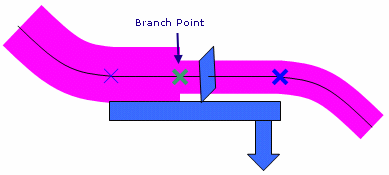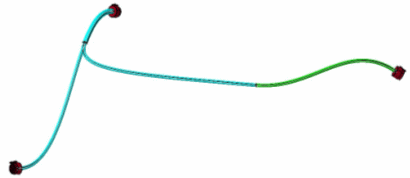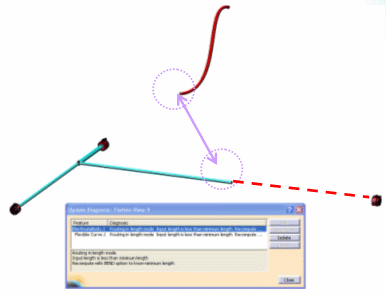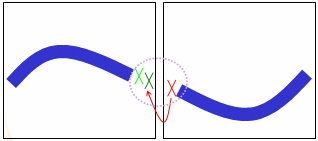The following examples illustrate the
methodology to follow when flattening your harness:
Branch Point in the Middle of the
Support/Retainer
|
 |
- This methodology is valid when using the New
From and Synchronize (with mechanical constraints)
extract algorithms
- Creating a branch point in-between the entry point and the
exit plane of a support is not recommended. It won't be handled by
the Flatten command.
| Let's have a look at this scenario: |
- If the support has been defined like this:
- and you route a branch through this support,
- you will not be able to use the branch point in the middle of
the support, as it will not be handled when flattening.
If a branch point is too close to a support, one of the support
points close to the branch point is removed from the route during
flattening and an electrical curve update error message appears.
The recommended methodology is to ensure that the branch point is
a minimum distance of 3% of the branch length or 5mm, whichever is
applicable, from the support or indeed any other point on the branch
route.
 |
|
Start and End Points of Bundle
Segments
|
 |
This methodology is valid when using the New
From extract algorithm. |
| |
When routing bundle segments, it is recommended that the
end point of a bundle segment is the start point for the next bundle
segment. However, for whatever reason, you may have routed a bundle segment
from an end point you specifically created for this purpose.A.
Two single bundle segments
For example, you were expecting the following result:

and obtained this:

|
| |
If this is the case, the workaround is to isolate the
connection and flatten the bundle segment.
 |
| |
B. Two bundle segments routed from a
single bundle segment
 |
| |
The above case is not handled when flattening. The
workaround is to flatten bundle segments separately by selecting both
bundle segments (partial flatten). |
![]()